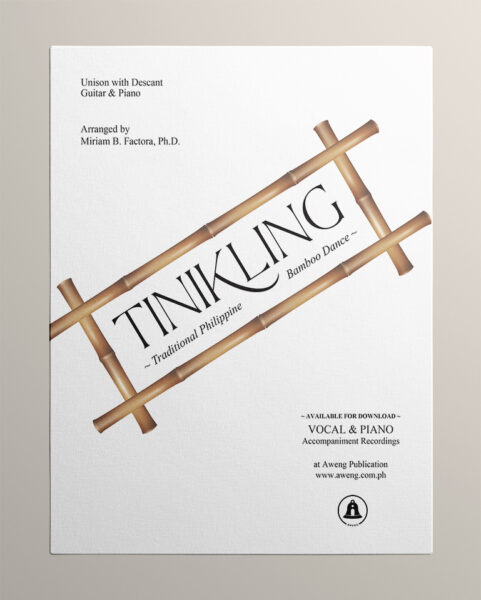Tinikling | Traditional Philippine Bamboo Dance
Unison with Descant Guitar and Piano





Tinikling is an exuberant traditional dance from the Philippines that beautifully showcases the nation’s rich cultural heritage. It is known to be one of the oldest traditional dances that originated from the Visayan region of the Philippines, particularly in the provinces of Samar and Leyte. The performance typically involves two dancers who expertly navigate between bamboo poles laid on the floor. These poles are rhythmically clapped together by two other participants positioned at their ends. Dancers often perform barefoot in colorful traditional attire, stepping in and out of these clapping bamboo poles with precision and grace—an impressive display of agility and coordination. This dance mirrors how long-legged Tikling birds cleverly avoid bamboo traps set by farmers in rice fields to protect their crops from these intruders.
I discovered this song during my fieldwork research in the Philippines in the late 1990s. Originating from the Waray-speaking communities of Samar and Leyte provinces, this unique melody has been translated into Filipino, the national language. Interestingly, it offers a variation to a more widely performed tune typically played by a rondalla—a string ensemble introduced by Spain during its colonization of the Philippines.
Tinikling, typically performed at a faster pace by more experienced dancers who often speed up the tempo towards the end, needs considerable technical skill. Nevertheless, inspired to make this accessible for my elementary students, I’ve crafted a version with a more manageable tempo and simplified dance steps. The choral arrangement is also simple and straightforward with a descant included to enhance the harmony. It is crafted for less experienced singers for them to find greater enjoyment in their singing and dancing this challenging dance. I took the liberty of using the piano as an accompaniment with the option of also incorporating a guitar. A recording of the song sung by a young talented Filipino singer, Ma. Victoria V. Valdez, provides non-Filipino speakers the opportunity to have a more authentic experience of the song and gain a better insight on the pronunciation of the words. I am also offering an instrumental recording without vocals for students to use while learning the dance or to use as an accompaniment in the absence of an accompanist.
Dancing the Tinikling goes beyond showcasing creativity and community unity. It also honors the rich and enduring traditions that have been cherished across generations.
